What to do before planting seedlings
Preparing the soil for planting
To grow eggplant seedlings at home, you can prepare the soil yourself. To do this, you need to mix 4 parts lowland peat, 3 parts humus or compost and 1 part river sand. Add three matchboxes of superphosphate and a glass of wood ash (or half a glass of potassium sulfate) to a bucket of this mixture, and then mix thoroughly.
|
Many gardeners consider eggplants to be too capricious a crop and prefer to buy ready-made seedlings |
You can also buy soil at a specialty store. In both cases, the ground must be frozen for several days in the open air. This is done to disinfect the soil.
What is the best way to grow
It is very convenient to grow eggplant seedlings in plastic cups at home. Their variety will allow you to choose the desired shape and size.
You can also use special cassettes. Each plant is located in a separate section, moisture evaporates slowly, transportation is safe. Caring for eggplant seedlings It turns out convenient, the same conditions are created for all plants, they develop evenly.
In the absence of the above utensils, seedlings are grown in boxes or trays, but then it will be necessary to pick. This procedure will lead to damage to the weak roots of the seedlings and to their inevitable growth retardation.
What not to grow in:
It is not advisable to grow eggplants from seeds in peat tablets and peat cups. Peat strongly acidifies the soil, and eggplants do not like this at all.
Preparing seeds for sowing
- The seeds are left in a solution of potassium permanganate for half an hour;
- Rinse with clean water
- Place in a nutrient composition: add a spoonful of wood ash, or nitrophoska, to a liter of water.
|
Pre-treatment can reduce seed germination time |
After a day, the seeds are removed and transferred to a saucer for germination.
How to grow eggplant seedlings
When to plant
Seeds are sown 2-2.5 months before planting seedlings in a permanent place. Shoots appear in 10-15 days.Plants are planted in greenhouses in mid-May, in beds under film - in early June.
Temperature (very important factor)
Recommended temperature: the optimal germination temperature is 20-25*C, at which eggplant seeds sprout on the 8-10th day (minimum 13*C). After emergence of seedlings within 3-5 days, it is recommended to lower the temperature to 17-20*C during the day and 10-12*C at night, which will promote better root growth. Further, the temperature rises again to 25-27*C during the day and 15-18*C at night.
|
Seeds that have undergone pre-sowing preparation germinate quickly. |
How to water
Watering once a week is sufficient. Water moderately, otherwise the root system may be damaged by blackleg. It is advisable to use settled water at a temperature of 25-28 degrees.
Every 2-3 days, unfold the boxes with seedlings so that their growth occurs evenly in relation to the light.
Top dressing
Eggplant seedlings are fed in two doses, just like pepper seedlings. In this case, watering can be combined with fertilizing. For example, you can grind the eggshells of 10 eggs and pour 3 liters of it. hot water - leave for 5 days, stirring occasionally. After this, strain the solution and water the seedlings. An infusion of used tea leaves can be used as a watering. During the process of growing seedlings, you can add wood ash to the pots 1–2 times. 1 tsp. for 2-3 pots.
Seedlings sometimes get blackleg disease. To prevent this disease, seedlings should be watered and fed only in the morning. Eggplant seedlings can be watered once with the “Zaslon” solution, 1 tablespoon per plant. solution for 0.5 l. water - 2 caps.
|
If the plants develop slowly, the color of the leaves has become light green, then fertilize with “Ideal” and “Signor Tomato” fertilizers. For better root growth, “Breadwinner” fertilizers are well suited - 1 tbsp. or "Agricola-Forte". |
Backlight
Pay attention to the lighting conditions of the sprouts, especially in the initial phases of growth. It is necessary to additionally install artificial lighting with fluorescent lamps or ordinary incandescent lamps with a power of 40-75 watts, placing them above the plants so that they are no closer than 8-10 cm from the plants. The backlight turns on from 8 a.m. to 8 p.m. At night the plants rest.
To prevent seedlings from stretching
As soon as the leaves appear, the film should be removed and the plants themselves should be placed closer to the light. Eggplant leaves are wide, so you need to make sure that the shoots do not thicken. Otherwise, the seedlings will stretch out. Too high a temperature will also cause the sprouts to stretch out.
In addition, pay attention to the feeding area of the eggplant seedlings; it should be sufficient, because the expected yield also depends on this.
Growing eggplant seedlings without picking
|
If seedlings are grown without picking, then sowing is carried out immediately in pots or glasses 10 x 10 cm. 2-3 seeds are sown in a pot to a depth of 1-1.5 cm, covered with earth, and compacted. After germination, one, the strongest plant is left. |
Boxes or pots with crops should be covered with film or glass and placed in a warm place (23-25 degrees). Under such conditions, the seeds will sprout in 5-8 days. As soon as the seeds sprout, the film or glass must be removed.The air temperature must be lowered to +13+16 degrees, this will prevent the sprouts from stretching and will help the root system to grow and strengthen.
After 5-6 days, increase the temperature again to +20+25 degrees during the day and +15+18 degrees at night. At this temperature, eggplant seedlings will grow before being planted in the ground.
Growing followed by picking
It is better to grow eggplants without picking, sowing prepared seeds directly into pots or cassettes. But this will require a large area at once. If there is not enough space, you will have to sow the seeds in boxes and then plant them in cups.
Sowing seeds
When sowing in boxes, the soil mixture poured in a layer of 6-8 cm is leveled, slightly compacted and grooves 1.0-1.5 cm deep are made every 5 cm. The grooves are watered with warm water and the seeds are laid out at a distance of 2-3 cm from each other. The furrows are filled with the same soil mixture, and the crops are lightly compacted.
Growing conditions
Containers with crops are covered with film and placed in a warm (24-26 ° C) dark place. Every day the soil is sprinkled with water. As soon as the first seedlings appear, the containers are transferred to the windowsill and kept at a temperature of +16-18°C.
This regime is needed for a short period of time (6-7 days) so that the seedlings do not stretch too much and produce strong roots. Then the temperature is gradually increased: during the day in sunny weather to 23-25°C, in cloudy weather - to 18-22°C, at night - 16-17°C. Water the seedlings once every 3 days with warm, settled water. Before diving, plants can be kept under a film cover.
Picking
If the seedlings are thickened, when two true leaves appear, the plants are planted in separate pots or cups with a volume of at least 1-1.5 liters.Transplantation is done very carefully, since eggplant roots do not recover well.
|
After picking is completed, the seedlings are transferred to a room with a temperature of 18-20º and care is taken not to expose them to sunlight. |
When transplanting, plants are buried down to the cotyledon leaves.
Hardening
Hardening of eggplants begins 3-4 weeks before planting in a permanent place. First, increase ventilation, avoiding drafts, which are detrimental to young plants. Then, if the air temperature outside is above +15 degrees, they take it out onto the balcony. First, for 1-2 hours, gradually increasing the time the seedlings spend in the fresh air. If there is no threat of frost, the seedlings can be left on the balcony or in the greenhouse overnight, covered with covering material.
|
Grown eggplant seedlings should have 8-10 leaves, be 20-25 cm in height, with a well-developed root system, strong, compact, and not elongated. Weak, elongated, diseased plants are discarded. |
Mistakes when growing eggplant seedlings
- Sowing too late. We usually sow eggplant seedlings at the end of February. But in March it is still quite possible to do this. What caused such a rush? Eggplant is a slow-growing crop; seedlings appear after 7-10 days. In addition, it is worth considering that the optimal age of seedlings for planting in open ground is 80 days. If the seedlings are young, the harvest will be smaller. Sixty-day-old seedlings produce only 60% of the harvest.
- Incorrect pick. The root system of eggplant is fragile and more vulnerable compared to other nightshades. And if in the very early stages the picking is painless, then it is better not to touch older seedlings again - the plant receives severe stress and takes a long time to recover.Therefore, many gardeners prefer to sow eggplants in individual containers, cups, or peat tablets. that is, they do without picking at all.
- Wrong neighbors. You should not place eggplants next to other nightshades in the beds - you should not do this on the windowsills either.
- Unbalanced feeding. In addition to traditional fertilizers, do not forget about charcoal or ash. They should be sprinkled on the surface of the soil. Periodically, on cold cloudy days, this simple technique will not only supply the plants with useful elements, but also prevent the occurrence of fungal diseases.
- Loosening. Loosening can bring not so much benefit as harm; the roots are located very close to the surface. Therefore, the most important thing is the correct soil, which will be light and porous. If a crust does appear, you can loosen it after watering no deeper than 2-3 cm.
- Incorrect watering. You can’t over-dry eggplants, but they don’t want to over-hydrate either. Therefore we water:
- abundantly,
- warm water
- without moisture getting on the leaves,
- without water stagnating on the soil surface (this does not happen only if the soil mixture for seedlings is selected correctly).
Early varieties of eggplant
Our specialists have selected for you early-ripening hybrids of long-bearing eggplants with a cylindrical fruit shape. The fruits slowly form seeds and have excellent taste. These hybrids are intended for both open ground and film greenhouses.
ARAGON F1 — 60 days from planting seedlings. The fruit is drop-shaped, with a small seed chamber, up to 19 cm long, black in color, and has excellent taste. The pulp is white, without bitterness. The hybrid is resistant to a number of diseases.Even large half-kilogram fruits have excellent taste.
BENEZIA F1 — 60 days from planting seedlings. The fruits are elongated-cylindrical, black, leveled, easily gain weight up to 300 g, length up to 20 cm. The fruits are transportable, of high taste. High resistance to a number of diseases.
ROMA F1 — 65 days from planting seedlings. The plant is powerful, tall, with excellent leaf cover, very productive. The fruits are elongated - up to 25 cm, weighing up to 300 g. They slowly form seeds, which increases taste.
KARATAI F1 — 122 days from full germination to the beginning of fruiting. The fruits are cylindrical, glossy, rich black in color, weighing up to 350 g, length up to 26 cm. One of the best hybrids in terms of yield.
Continuation of the topic:
- What to do if the eggplant leaves begin to wither
- How to care for eggplants in a greenhouse
- Control of diseases and pests of eggplants
- Why do eggplant leaves turn yellow in a greenhouse?
- How to properly feed and water eggplants
- Growing pepper seedlings
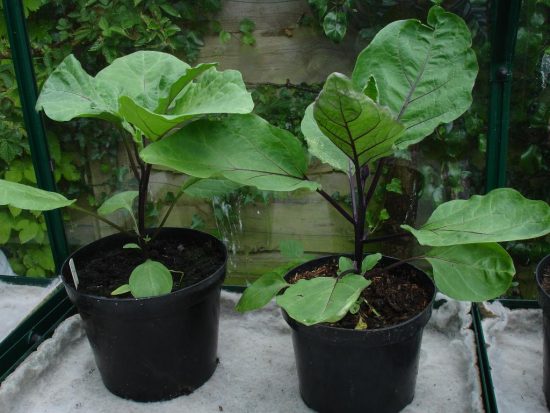
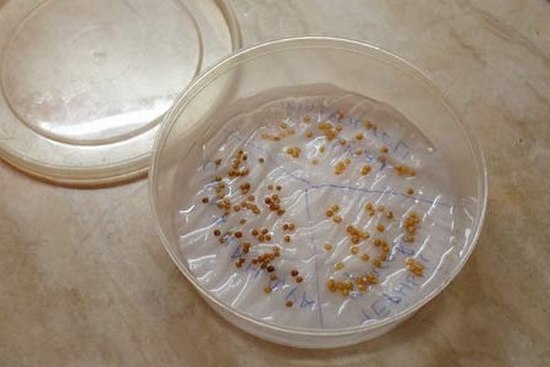
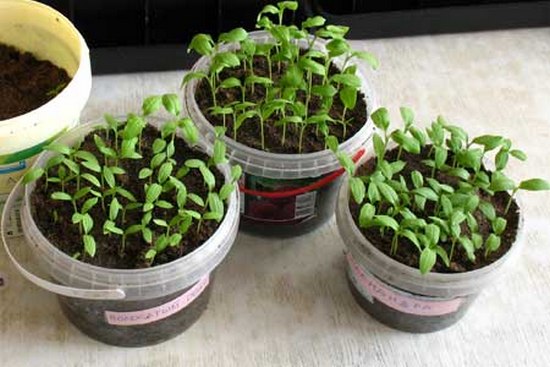
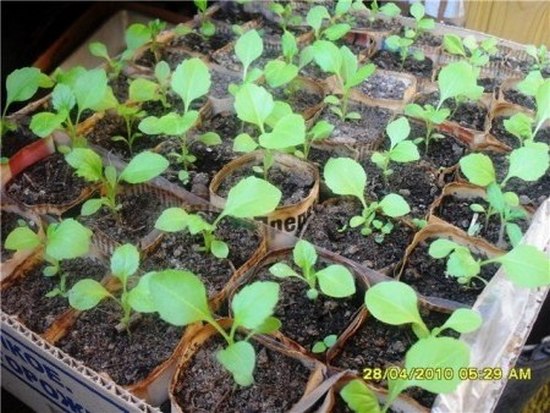

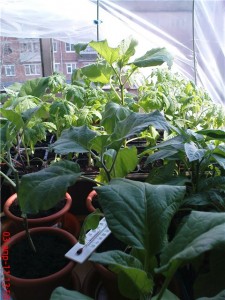
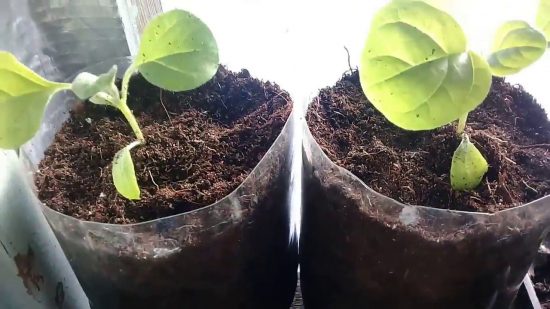
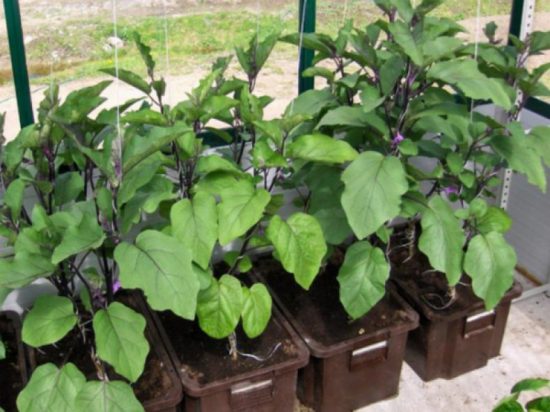

 CUCUMBERS NEVER GET SICK, I'VE BEEN USING ONLY THIS FOR 40 YEARS! I SHARE A SECRET WITH YOU, CUCUMBERS ARE LIKE THE PICTURE!
CUCUMBERS NEVER GET SICK, I'VE BEEN USING ONLY THIS FOR 40 YEARS! I SHARE A SECRET WITH YOU, CUCUMBERS ARE LIKE THE PICTURE! You can dig a bucket of potatoes from each bush. Do you think these are fairy tales? Watch the video
You can dig a bucket of potatoes from each bush. Do you think these are fairy tales? Watch the video
 How our fellow gardeners work in Korea. There is a lot to learn and just fun to watch.
How our fellow gardeners work in Korea. There is a lot to learn and just fun to watch. Eye trainer. The author claims that with daily viewing, vision is restored. They don't charge money for views.
Eye trainer. The author claims that with daily viewing, vision is restored. They don't charge money for views. A 3-ingredient cake recipe in 30 minutes is better than Napoleon. Simple and very tasty.
A 3-ingredient cake recipe in 30 minutes is better than Napoleon. Simple and very tasty. Therapeutic exercises for cervical osteochondrosis. A complete set of exercises.
Therapeutic exercises for cervical osteochondrosis. A complete set of exercises. Which indoor plants match your zodiac sign?
Which indoor plants match your zodiac sign? What about them? Excursion to German dachas.
What about them? Excursion to German dachas.